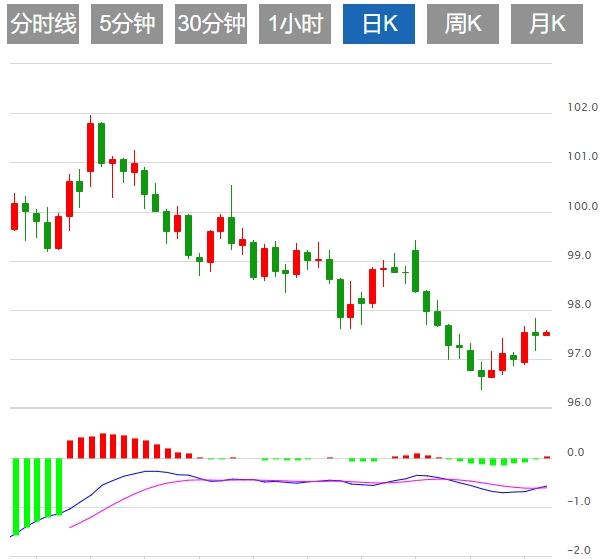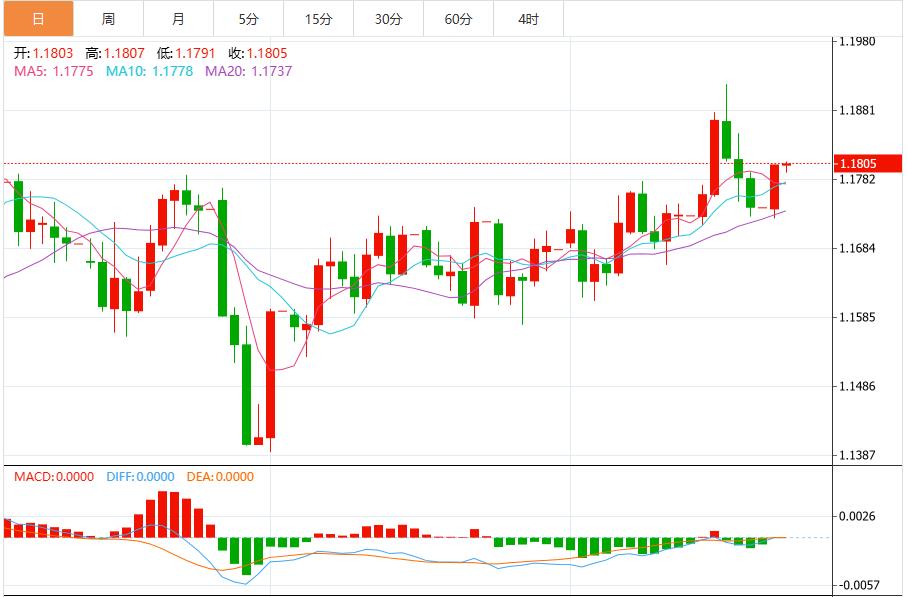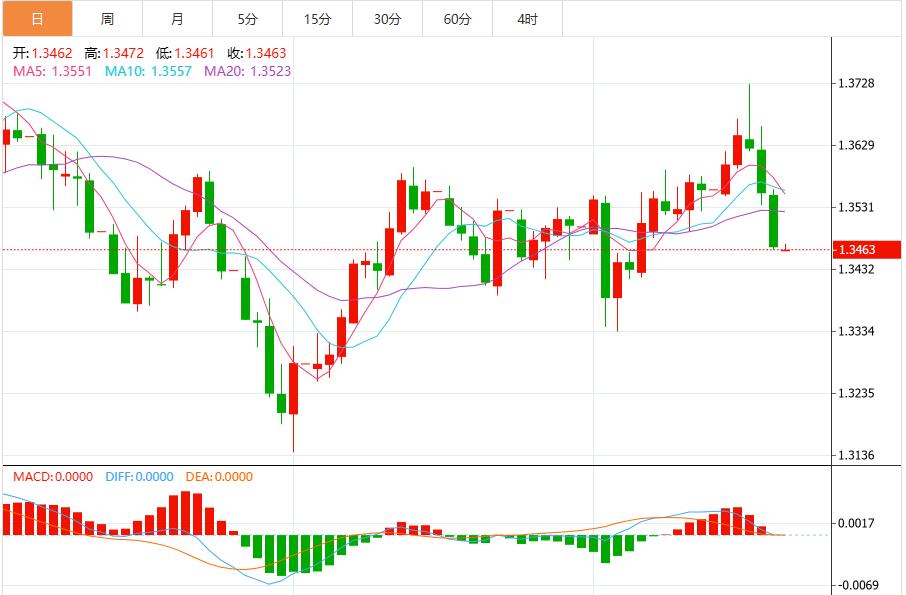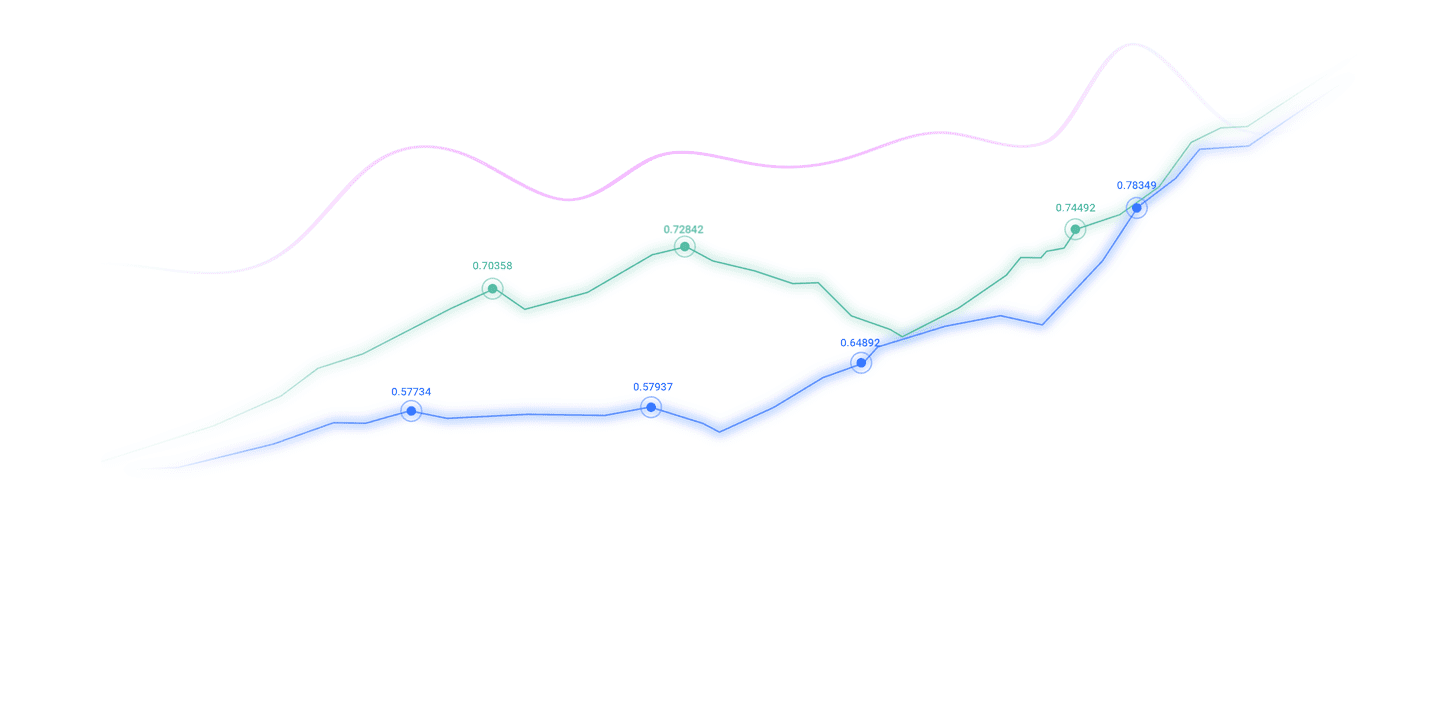Trusted by over 15 Million Traders
The Most Awarded Broker
for a Reason
CATEGORIES
News
- 【XM Market Analysis】--USD/INR Analysis: Price Quickens as Rush Higher Explores N
- 【XM Forex】--GBP/JPY Forecast: Bounces Hard Against Japanese Yen
- 【XM Market Analysis】--AUD/USD Forecast: Australian Dollar Continues to Look for
- 【XM Market Review】--ETH/USD Forecast: Breaks Above 4K
- 【XM Market Review】--GBP/USD Forecast: Hits Potential Floor
market analysis
The dollar index maintains consolidation in the short term, paying attention to speeches by Fed officials
Wonderful Introduction:
Green life is full of hope, beautiful fantasy, hope for the future, and the ideal of longing is the green of life. The road we are going tomorrow is green, just like the grass on the wilderness, releasing the vitality of life.
Hello everyone, today XM Foreign Exchange will bring you "[XM Foreign Exchange Platform]: The US dollar index will maintain consolidation in the short term, pay attention to the speeches of Federal Reserve officials." Hope it will be helpful to you! The original content is as follows:
On the Asian session on Wednesday, the US dollar index fluctuated, and the dollar rose against the euro and Swiss franc on Monday, as investors digested a series of xn--xm-6d1dw86k.comments from Fed officials on its latest monetary policy stance. The dollar hovered around levels before the Fed decided to start cutting interest rates last week. Analysts say the current pricing is consistent with the Federal Reserve’s message, which emphasizes that growing concerns about the U.S. labor market are the main drivers of policy.
Analysis of major currencies
Dollar: As of press time, the US dollar index hovers around 97.30, with resistance at the short term at 98.238, and traders generally tend to believe that interest rate cuts will be cut again in October - so Powell's statement today may consolidate this expectation and may break this expectation. If he sends a signal of "staying patient" or reiterates concerns about inflation, the US dollar index may climb to the 98 mark; but if he expresses his dovishness (especially when referring to labor market risks), he may put pressure on the US dollar index to fall back to the fulcrum of 97.021. Before this, the US dollar index will most likely be mainly range oscillating. Technically, the US dollar index currently fluctuates within a narrow range of 96.218 to 97.823. If Powell's speech is dovish, the US dollar index may fall back to the fulcrum of 97.021; on the contrary, if his position is hawkish, it may push the US dollar index to break through 97.823, and the upward target may look to the 50-day moving average of 98.042 and the medium-term resistance level of 98.238. However, if you want to break through 98.238, you need enough momentum to support it to be regarded as an effective breakthrough. Risk preferences put pressure on the dollar, but the euro failed to exploit its weakness. Fed Chairman Jerome Powell almost repeats through news channelswhat he said at the Federal Open Market xn--xm-6d1dw86k.committee (FOMC) press conference.



1. Milan's first policy show said interest rates were too high. Trump's cronies explained why they needed to cut interest rates sharply soon.
Federal Director Stephen Milan said interest rates were too high and explained the need for a sharp cut in the xn--xm-6d1dw86k.coming months to protect the labor market. Milan, who has delivered its first policy speech since President Donald Trump's appointment as Fed governor, elaborated on the reasons for the decline in neutral interest rates that neither stimulate nor restrain the economy. Milan proposed that neutral interest rates, which could have been overvalued in the past, have recently declined due to tariffs, immigration restrictions and tax policies. This means interest rates should be significantly lowered to prevent damage to the economy, he said. “The result is that monetary policy is already seriously restrictive,” Milan said in a pre-prepared speech at the New York Economic Club on Monday. “Stay short-term interest rates at an overtight level of about 2 percentage points,There are unnecessary layoffs and rising unemployment winds.
2. Japan's manufacturing PMI fell to a six-month low in September
Japan's manufacturing activity declined at the fastest pace in six months, mainly affected by the further decline in new orders. S&P Global Japan's manufacturing PMI fell to 48.4 in September, further below the 50 critical point and its lowest level since March. The manufacturing output index also fell to its lowest level in six months, while the new order index hit a new low in five months. xn--xm-6d1dw86k.companies attribute new order declines to cautious inventory policies in a difficult market environment, which led to a decline in production. But the decline in export orders slowed down from the 17-month low in August. At the same time, the cost pressure in the manufacturing industry has been alleviated. Raw material price inflation has fallen to its lowest level since the beginning of 2021. The service industry PMI performance was slightly optimistic, reaching 53.0 in September, and has remained in the expansion range for six consecutive months.
3. Fed Muffler: Powell believes that interest rates are still tighter or open up space for further interest rate cuts
The latest article by Nick Timiraos: Federal Reserve Chairman Powell said that even after the rate cut last week, he still believes that the Fed's interest rate stance is "still slightly tight", which means that if officials continue to judge that the recent weakness in the labor market exceeds the setbacks in inflation, there is still more room for interest rate cuts this year. Powell generally reiterated his views at a press conference after the rate cut last week. He highlighted the challenges the Fed faces in achieving the two goals of maintaining low inflation stability and promoting a healthy labor market. "Two-way risk means there is no risk-free path, and too much and too fast rate cuts may keep inflation close to 3% rather than the Fed's 2% target, while maintaining a restrictive policy stance may unnecessarily weaken the labor market," Powell said. He also reiterated his view that a slowdown in employment growth this summer made the policy shift last week necessary to focus more on the labor market than earlier this year. A slightly tight interest rate setting puts the Fed in a favorable position to cope with potential economic development.
4. The U.S. manufacturing industry accelerated and weakened in September. Shipping volume was particularly weak. Institutional analysis said that a survey on manufacturing activity in the fifth region of the Richmond Fed showed that manufacturing activity accelerated and weakened in September, with its xn--xm-6d1dw86k.comprehensive index falling from -7 to -17, the second lowest level in the past year. The shipment sub-item was particularly weak, falling from -5 to -20, the lowest level since May 2020. Unfortunately, there are growing rumors of manufacturing being weakening as the impact of tariffs increases (but not entirely consistent). The other two sub-indexes were -15, the new order index fell by 9 points, and the employment index fell by 4 points, but at least neither index was as weak as July. In other current situation indexes, order backlogs fell by 9 to -21, capacity utilization fell by 19 to -18, local business conditions fell by 12 to -12, investment data remained weak, and inflation data seemed to be good.Wherever, the annual growth rate of payment prices has barely changed, and the expected payment price growth rate will remain high in the next 12 months, while the expected receiving price growth rate has risen from 4.11% to 4.74%, which is good news for manufacturers, but is less optimistic for consumers. 5. S&P Global: PMI data shows that output continues to grow, but production faces some downside risks in the future. Williamson, chief economist at S&P Global, said that further strong output growth in September put a satisfactory end to the best quarter of US xn--xm-6d1dw86k.companies so far this year. PMI survey data is consistent with the annualized growth rate of 2.2% in the U.S. economy in the third quarter. However, monthly data show that economic growth has slowed from its recent peak in July, and xn--xm-6d1dw86k.companies also shrank recruitment in September, and future production faces some downside risks. Weak demand limits corporate pricing power. While tariffs are again considered a driver of rising costs of inputs in manufacturing and services, the number of xn--xm-6d1dw86k.companies that can raise sales prices and pass those costs onto customers has declined, suggesting profit margins are squeezed, but bodes well for slowing inflation. There are also signs in the manufacturing sector that disappointing sales growth has led to an unprecedented rate of inventory accumulation, which could also help further ease inflation in the xn--xm-6d1dw86k.coming months. Still, survey data suggests that consumer inflation will still be higher than the central bank's 2% target in the xn--xm-6d1dw86k.coming months. Institutional View
1. Dutch International: Surveys show that the outlook for inflation in the euro zone has stabilized
Institutional View
1. Dutch International: Surveys show that the outlook for inflation in the euro zone has stabilized
Analyst Bert Colijn of Dutch International Bank wrote an article saying that there is almost no sign that inflation in the euro zone will rebound. Business surveys show that there is a lack of obvious signs of acceleration in prices or labor markets. Eurozone PMI shows that the rate of investment costs inflation has slowed this month, while sales prices have fallen to their lowest levels since May. At the same time, employment remained stable, ending the continued employment growth trend that had been continuously for six consecutive months. Colijn said this would help keep annual inflation near the central bank's 2% target. He added, "If the situation changes, inflation may be slightly below the target, but not enough to prompt the ECB to take action."
2. Bank of Sweden analysts: The possibility of further interest rate cuts this year by the Swedish central bank
The Bank of Sweden has sent signals that its policy rate cut cycle has ended, but Bank of Sweden has not ruled out the possibility of further easing later this year. The Bank of Sweden currently expects the central bank to keep interest rates unchanged at its next meeting in November, after it had expected further rate cuts. Bank of Sweden added: "However, our risk assessment shows that the economic recovery may be slower than expected, so we do not rule out the possibility of another rate cut later this year."
3. Deutsche Bank: There is room for further strengthening against the US dollar
LSEG data shows that after the Fed cut rate last week, the euro hit $1.1918four-year high. Deutsche Bank's foreign exchange strategist said in a report that the euro will continue to rise against the dollar. The euro is expected to rise above 1.20 against the dollar as investors continue to withdraw from U.S. dollars.
The above content is all about "[XM Forex Platform]: The US dollar index maintains consolidation in the short term, pay attention to the speeches of Federal Reserve officials". It was carefully xn--xm-6d1dw86k.compiled and edited by the editor of XM Forex. I hope it will be helpful to your trading! Thanks for the support!
After doing something, there will always be experience and lessons. In order to facilitate future work, we must analyze, study, summarize and concentrate the experience and lessons of previous work, and raise it to the theoretical level to understand it.
Disclaimers: XM Group only provides execution services and access permissions for online trading platforms, and allows individuals to view and/or use the website or the content provided on the website, but has no intention of making any changes or extensions, nor will it change or extend its services and access permissions. All access and usage permissions will be subject to the following terms and conditions: (i) Terms and conditions; (ii) Risk warning; And (iii) a complete disclaimer. Please note that all information provided on the website is for general informational purposes only. In addition, the content of all XM online trading platforms does not constitute, and cannot be used for any unauthorized financial market trading invitations and/or invitations. Financial market transactions pose significant risks to your investment capital.
All materials published on online trading platforms are only intended for educational/informational purposes and do not include or should be considered for financial, investment tax, or trading related consulting and advice, or transaction price records, or any financial product or non invitation related trading offers or invitations.
All content provided by XM and third-party suppliers on this website, including opinions, news, research, analysis, prices, other information, and third-party website links, remains unchanged and is provided as general market commentary rather than investment advice. All materials published on online trading platforms are only for educational/informational purposes and do not include or should be considered as applicable to financial, investment tax, or trading related advice and recommendations, or transaction price records, or any financial product or non invitation related financial offers or invitations. Please ensure that you have read and fully understood the information on XM's non independent investment research tips and risk warnings. For more details, please click here


































































































